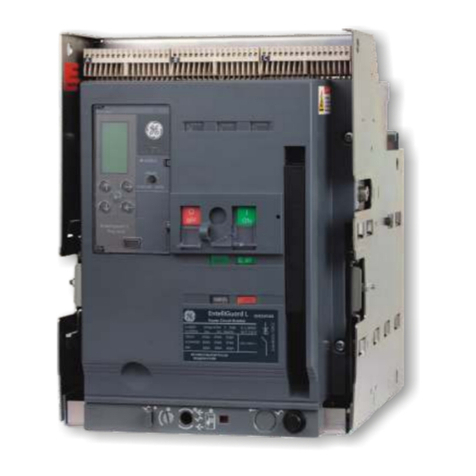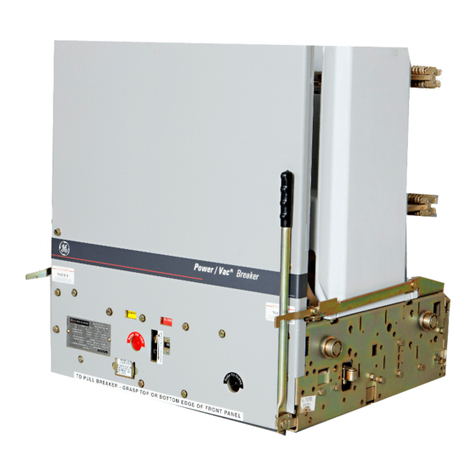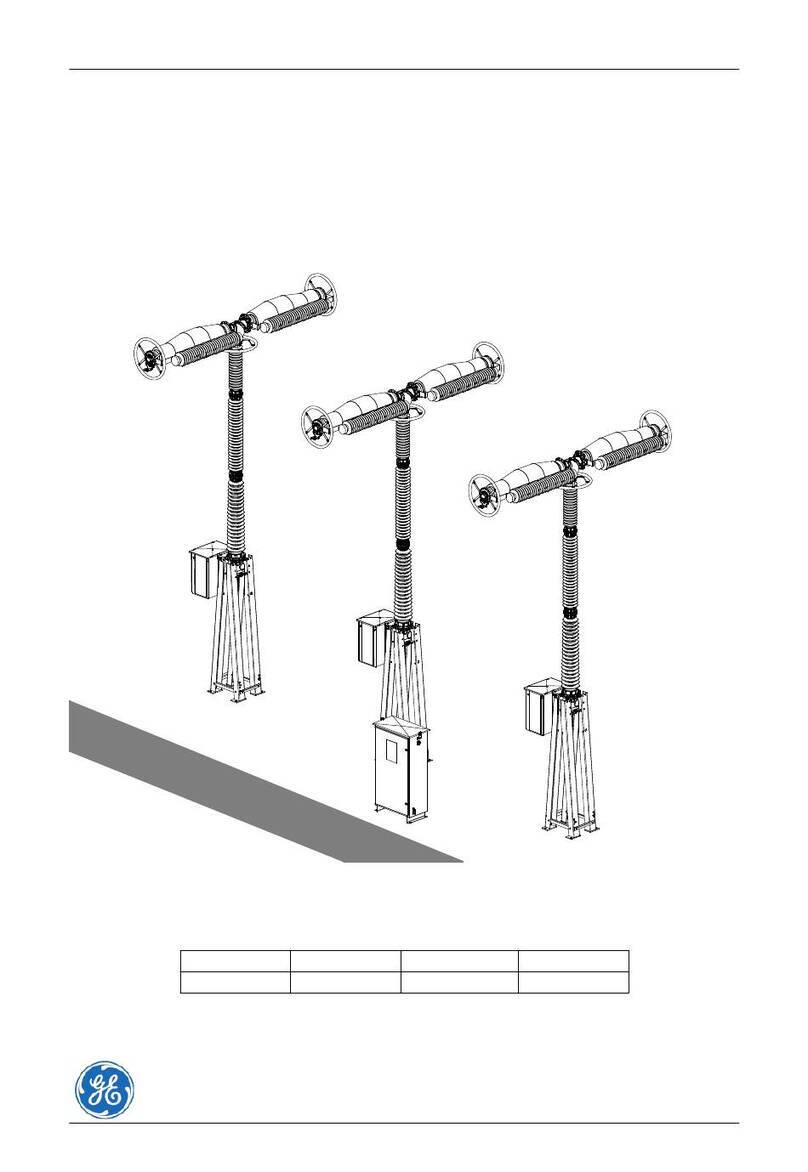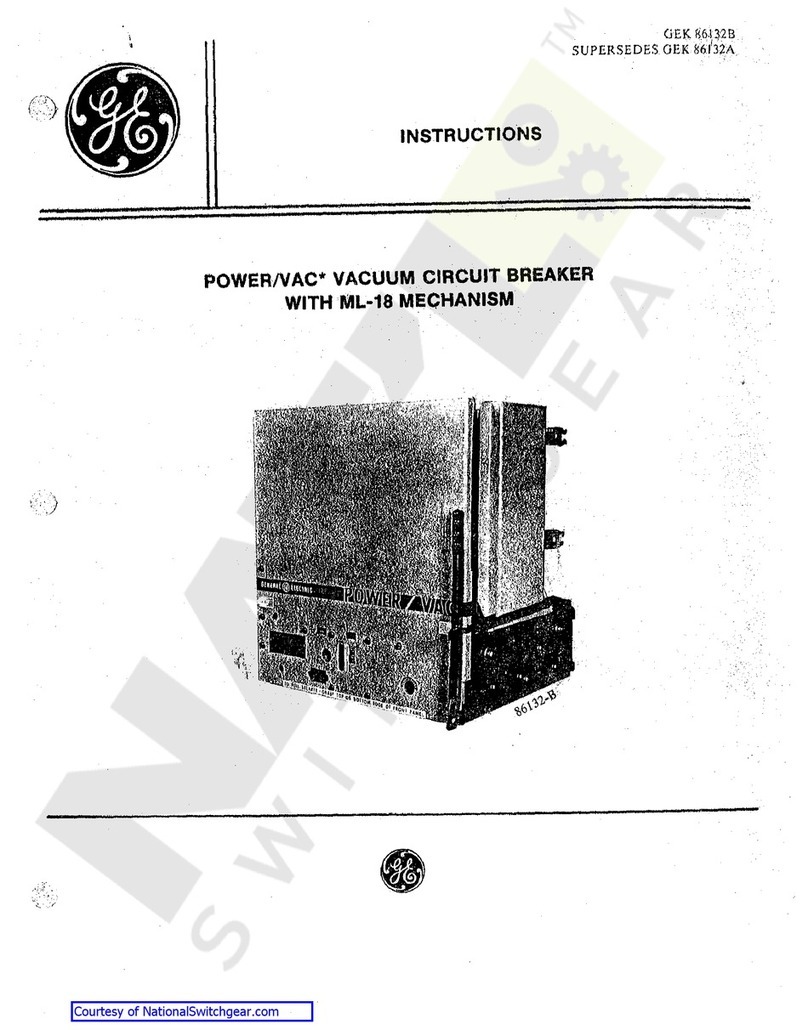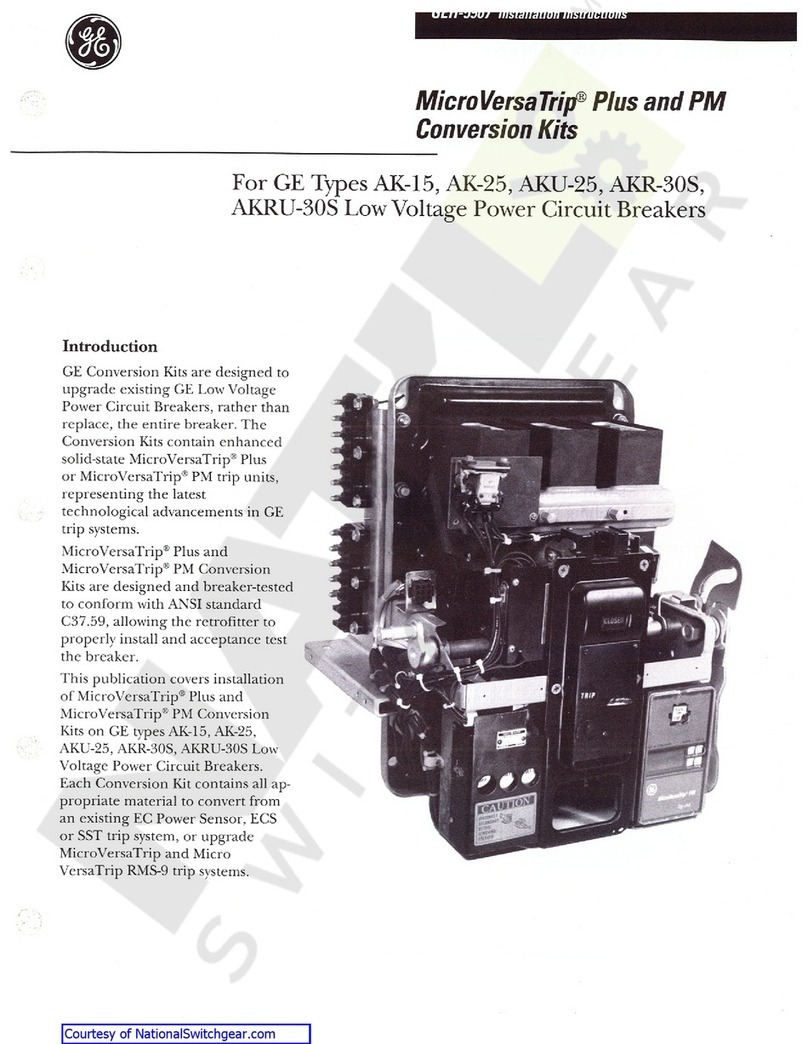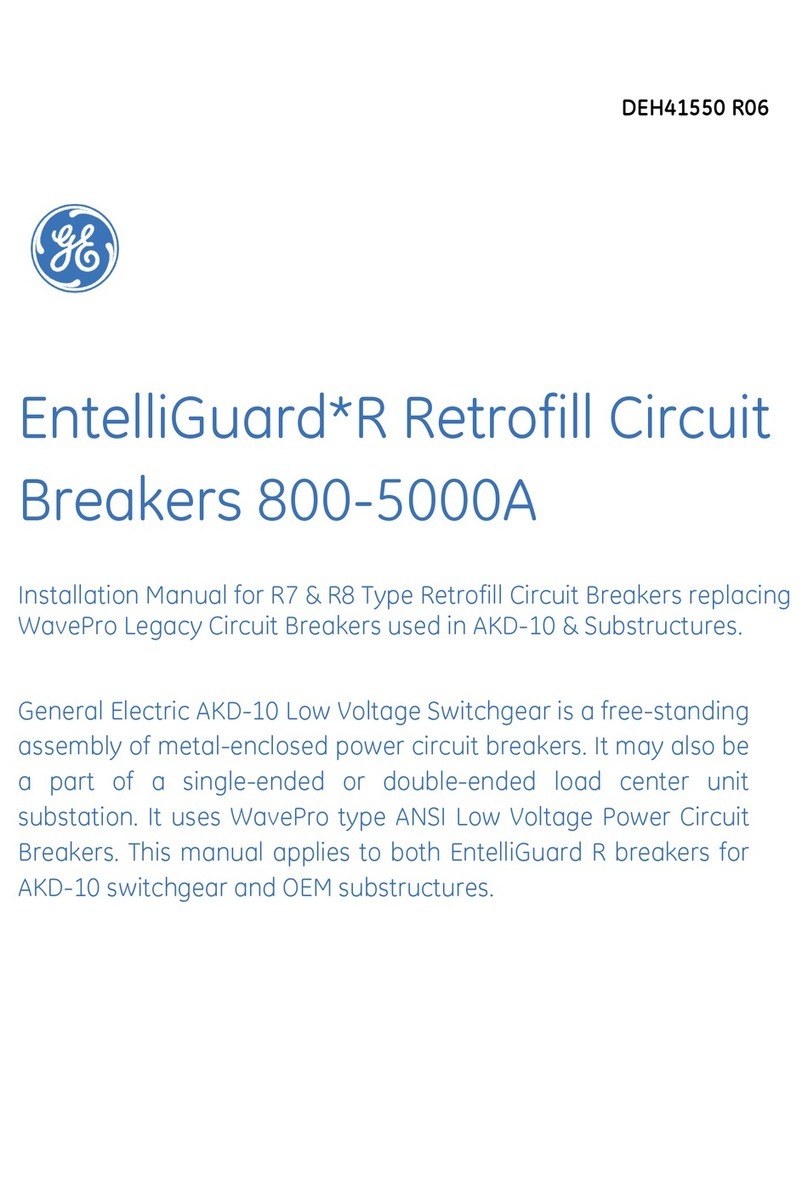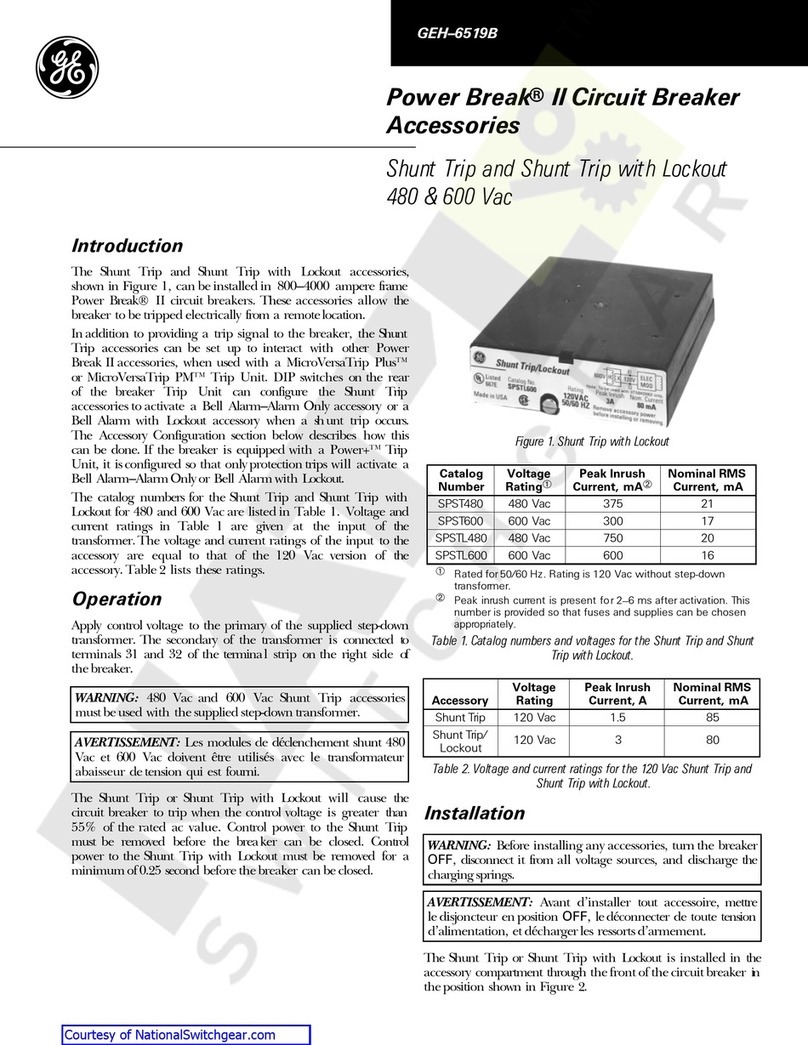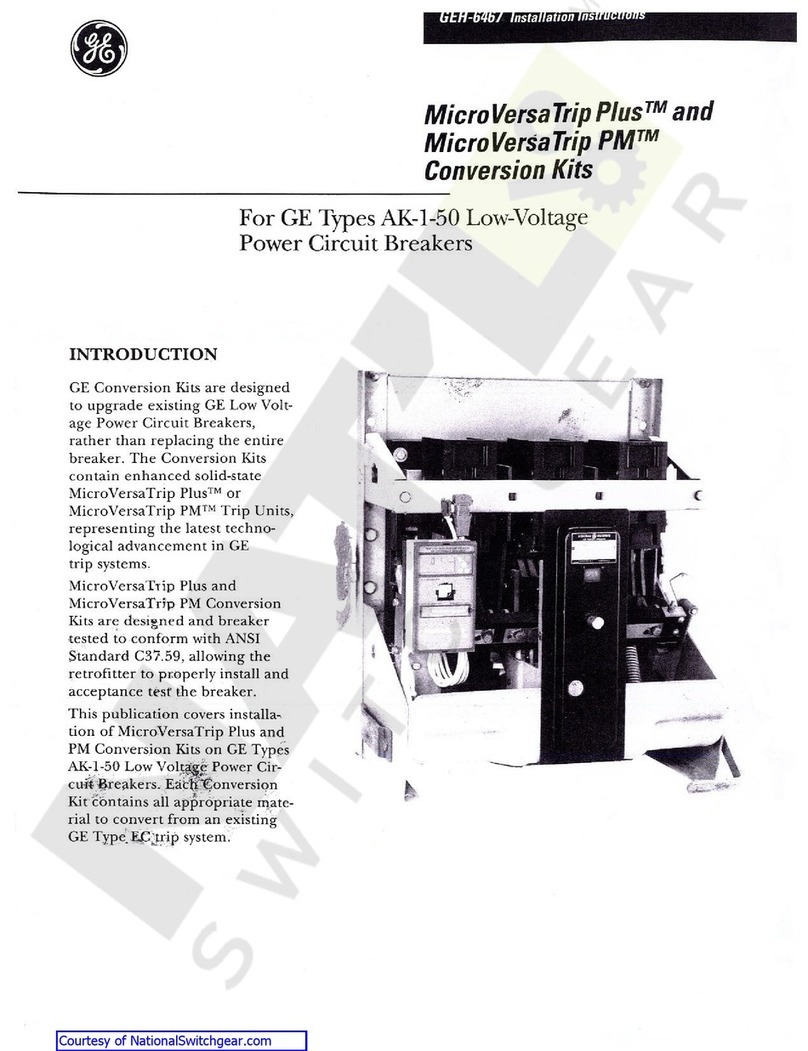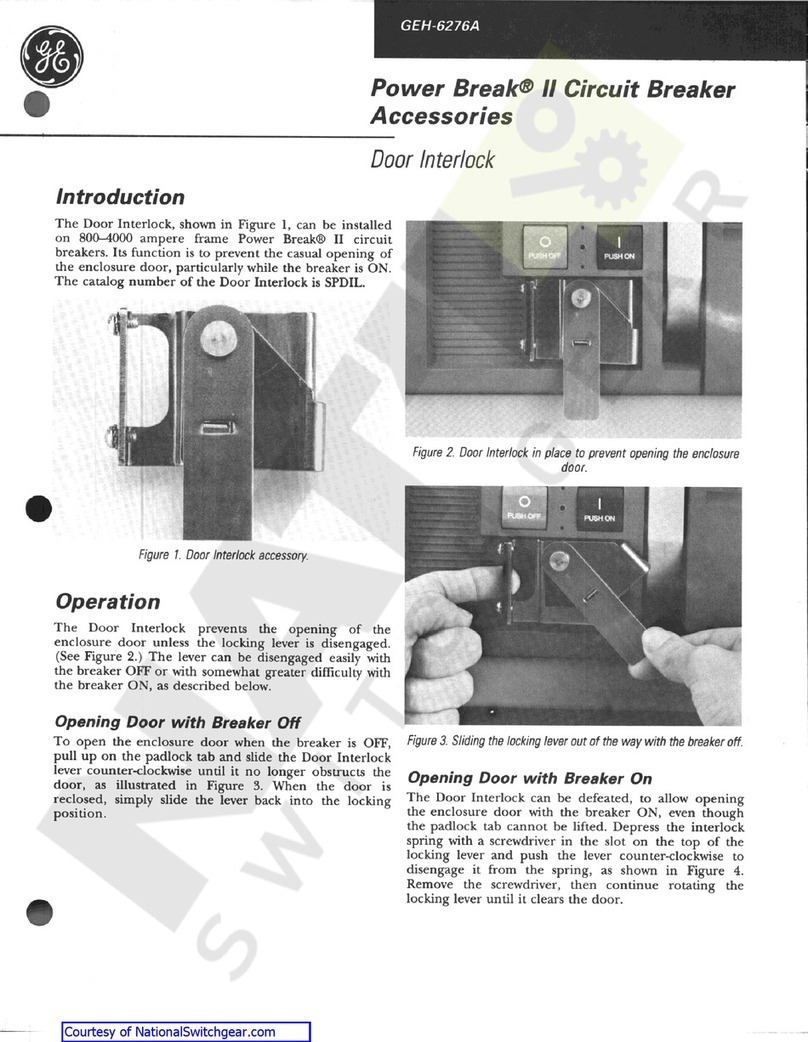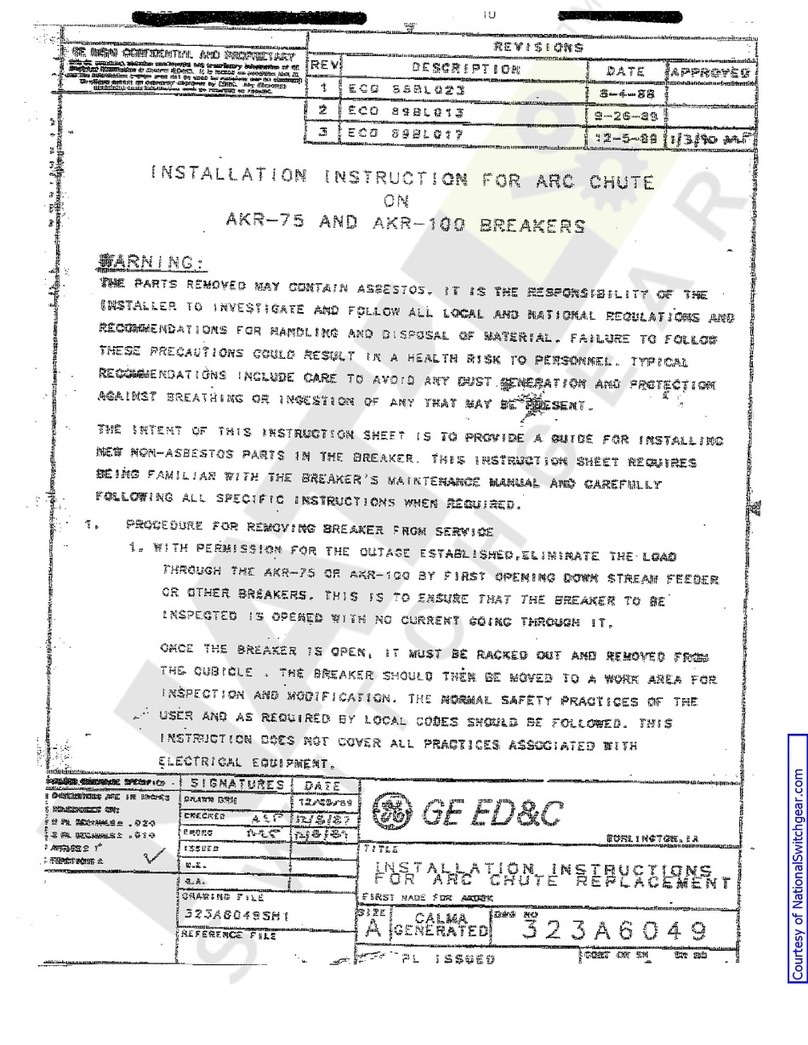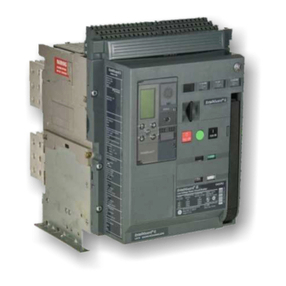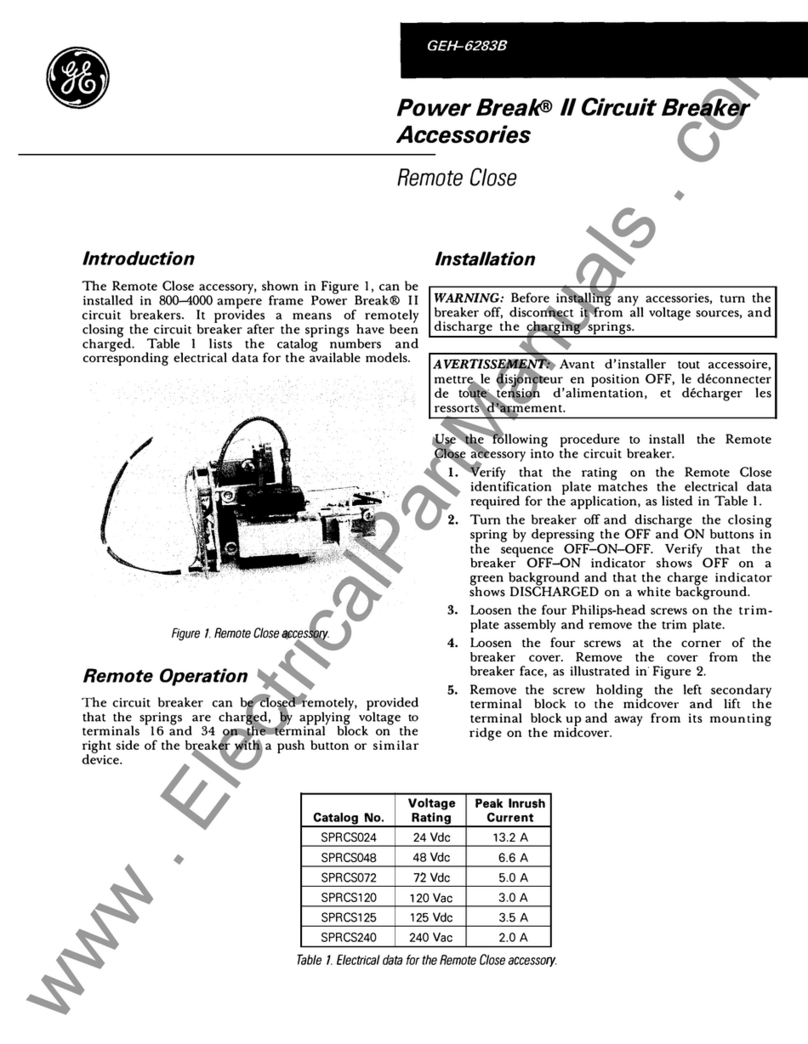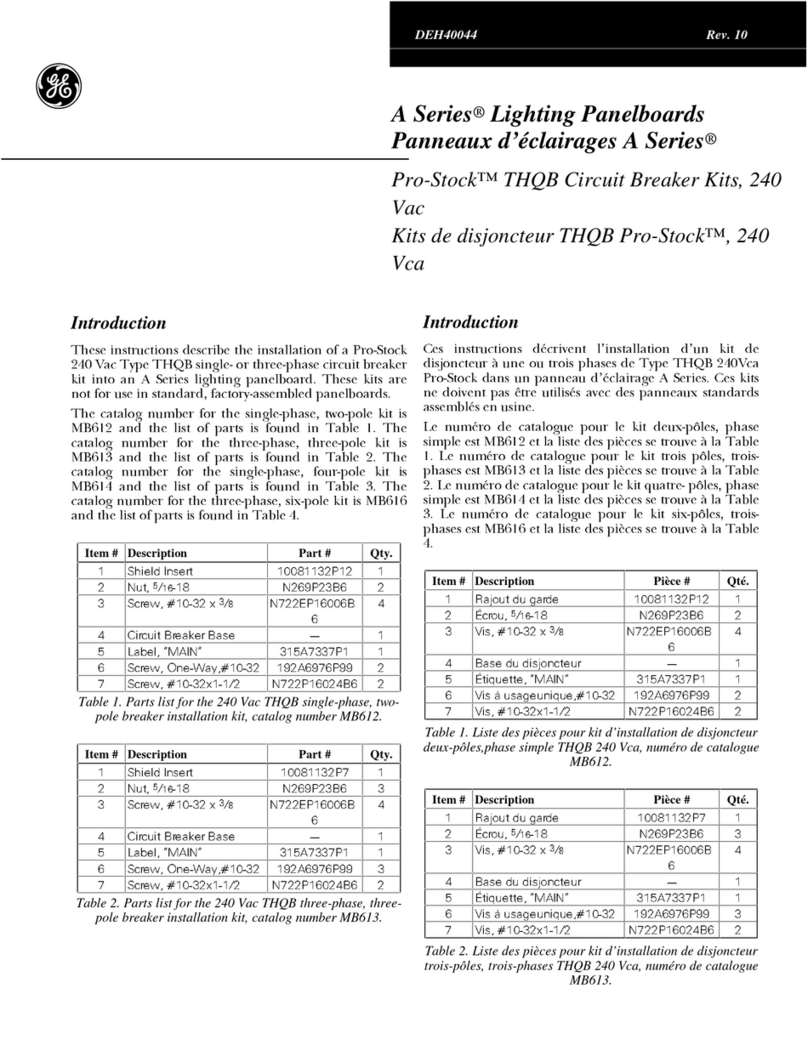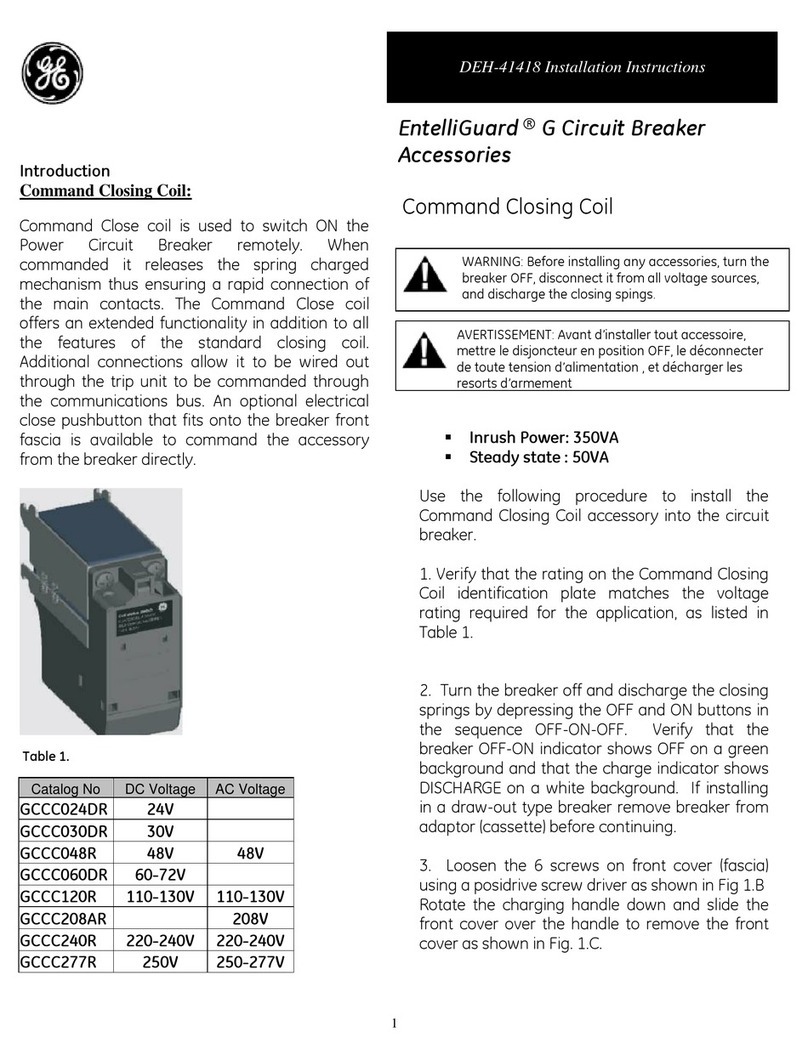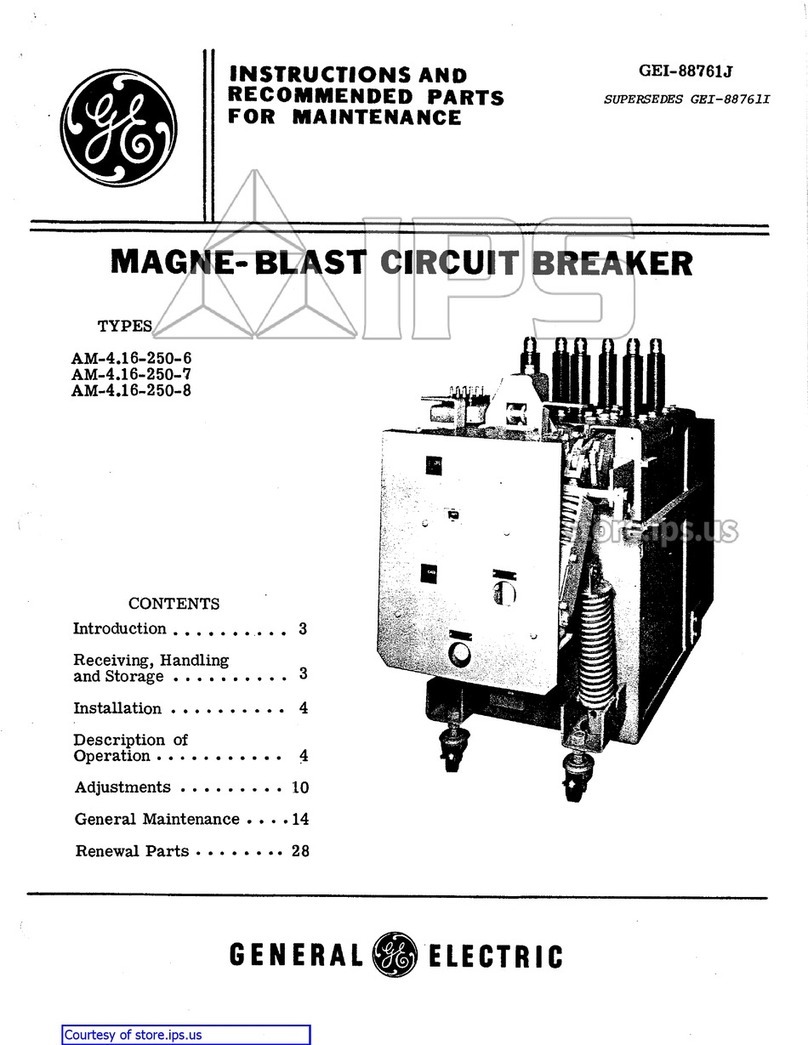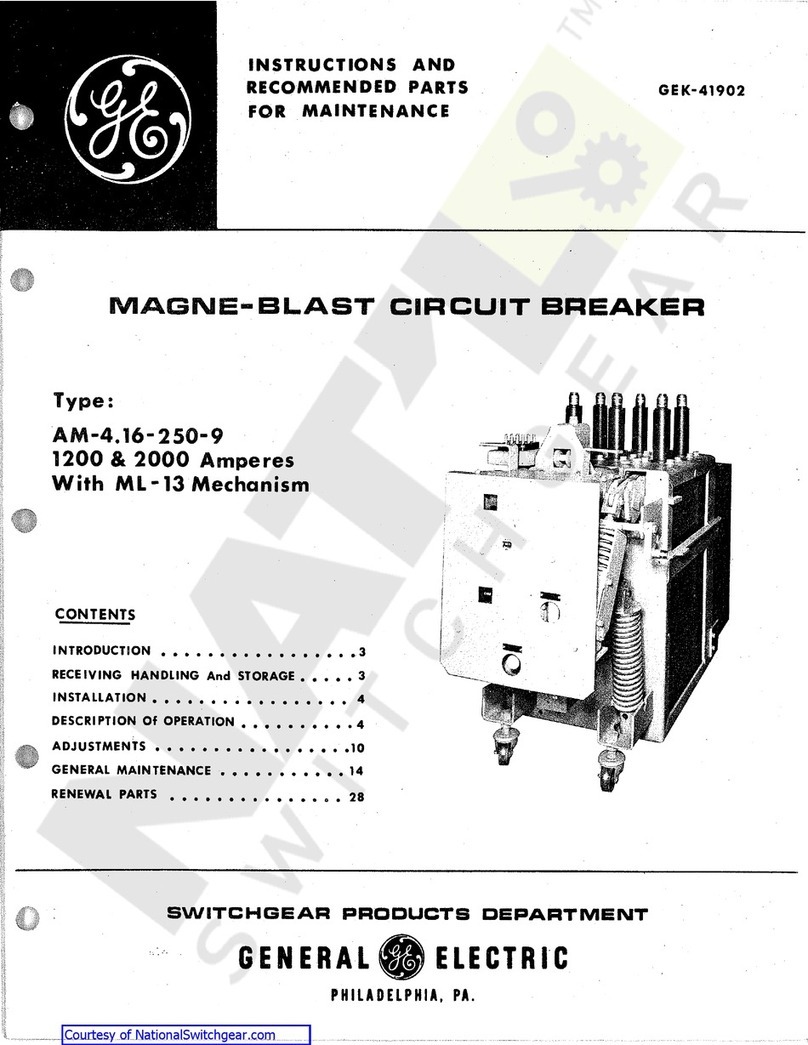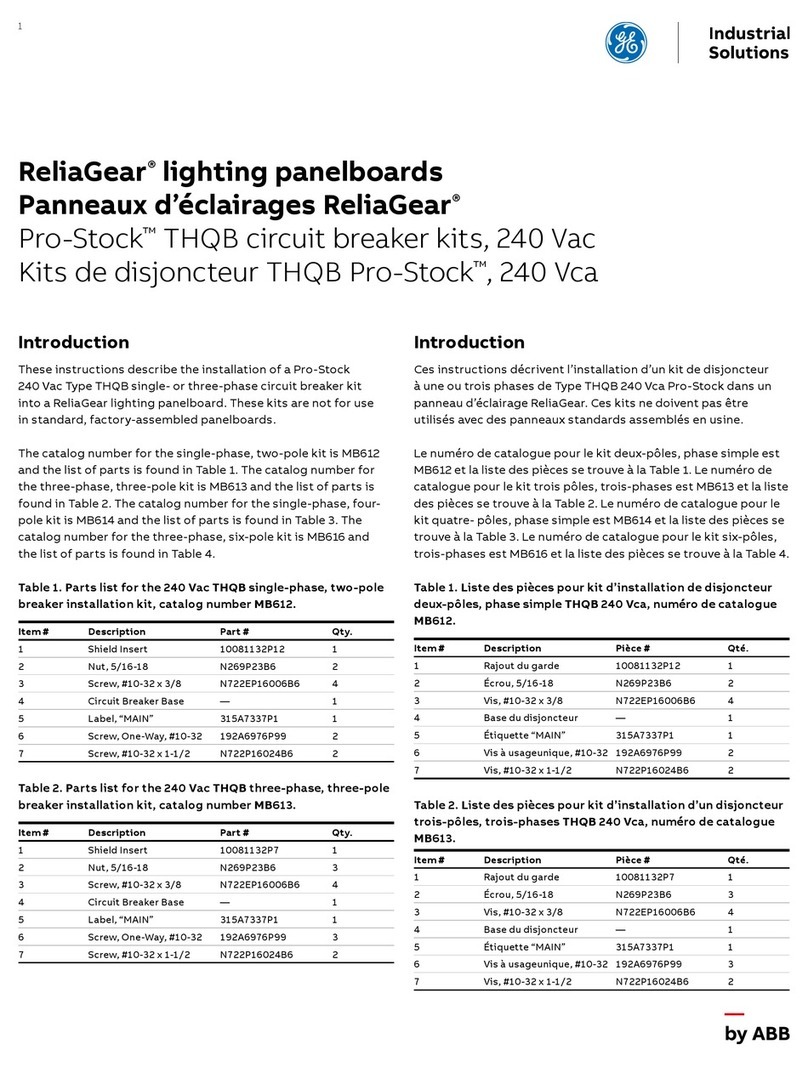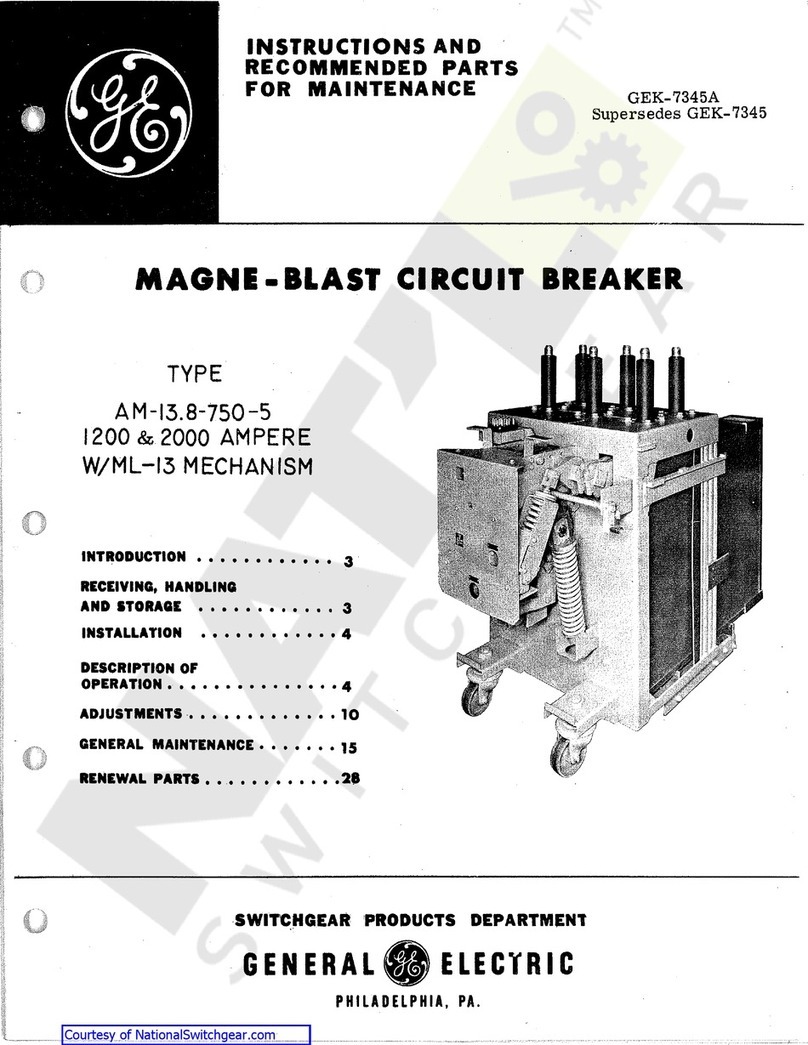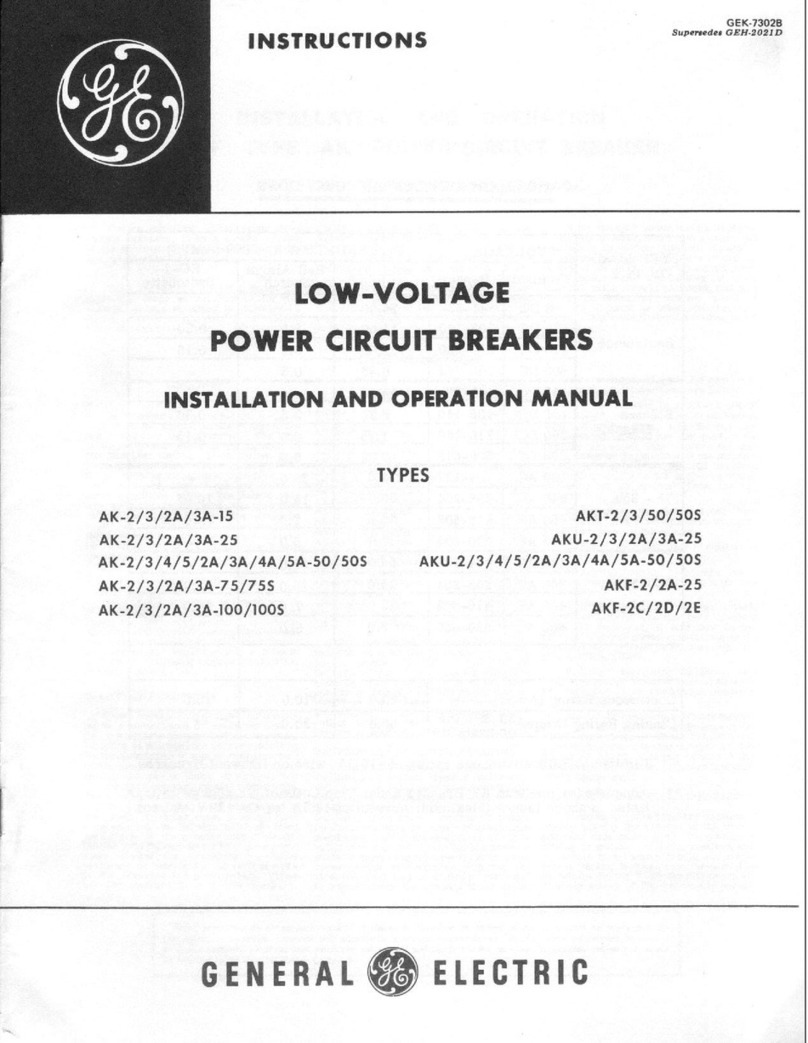
DET-653C EntelliGuard®G Circuit Breaker Application Guide
24-May-12 Table of Contents
©2012 General Electric All Rights Reserved
Above Other Power Circuit Breakers........................................................................................................................................................15
Terminology........................................................................................................................................................................................................... 15
Long Time Protection .................................................................................................................................................................................16
Thermal Long Time Overcurrent ................................................................................................................................................................ 16
Figure 3.3. Thermal Characteristic: Max. and Min. Long Time Delay Bands for a 1000A Long Time Pickup ...... 16
Table. 3.5. Thermal Characteristic: Nominal Clearing and Commit Times for X Multipliers of Nominal Pickup 17
Fuse-Shaped Steep Long Time Overcurrent........................................................................................................................................ 17
Figure 3.4. Fuse Characteristic: Max. and Min. Long Time Delay Bands for a 1000A Long Time Pickup............. 17
Table 3.6. Fuse Characteristic: Nominal Clearing and Commit Times for X Multipliers of Nominal Pickup........ 18
Thermal Memory.................................................................................................................................................................................................19
Short Time Protection....................................................................................................................................................................................... 19
Short Time Pickup .....................................................................................................................................................................................19
Figure 3.5. Short Time Pickup .................................................................................................................................................... 19
Figure 3.6. Short Time Transition .............................................................................................................................................19
Short Time Bands ......................................................................................................................................................................................20
Table 3.7. Short Time Delay Bands ......................................................................................................................................... 20
Figure 3.7 Short Time Delay ....................................................................................................................................................... 20
Short Time I2t Slopes................................................................................................................................................................................20
Figure 3.8. Short I2t (In or Out).................................................................................................................................................... 20
Ground Fault Protection..................................................................................................................................................................................20
Internal Residual Summation....................................................................................................................................................................... 20
External Zero Sequence Input...................................................................................................................................................................... 21
Ground Fault Pickup Settings.......................................................................................................................................................................21
Table 3.9. Ground Fault Time Delay Bands.................................................................................................................................. 21
Ground Fault Time Delay Bands................................................................................................................................................................. 21
Table 3.10. Minimum Ground Fault Pickup and Clear Time................................................................................................ 21
Ground Fault Protection Curves .................................................................................................................................................................21
Figure 3.9. Ground Fault Characteristics ...................................................................................................................................... 21
Instantaneous Protection............................................................................................................................................................................... 21
Adjustable Selective Instantaneous .........................................................................................................................................................22
Table 3.11. Max. Adjustable Instantaneous Pickup for CBs with Normal or Extended Range Option ......... 22
Table 3.12. Time Current Curves ....................................................................................................................................................... 22
High Set Instantaneous Overcurrent (HSOIC)...................................................................................................................................... 23
Making Current Release (MCR)..................................................................................................................................................................... 23
Table 3.13. HSIOC Locations................................................................................................................................................................ 23
Reduced Energy Let-Through (RELT) Instantaneous Trip .............................................................................................................. 23
Reduced Energy Let-Through Switch Wiring....................................................................................................................................... 24
Figure 3.10. Integrated Switch And LED, Spring Return from “Test” to ‘Off,” Latched in “On” .......................... 24
Zone Selective Interlocking (ZSI )................................................................................................................................................................ 24
Table 3.14. Instantaneous ZSI on EntelliGuard TU Trip Units in ANSI EntelliGuard G Circuit Breakers ........ 25
Figure 3.11. Zone Selective Interlocked CB, Upper CB Shown “Unrestrained” ......................................................... 25
Figure 3.12. Zone Selective Interlocked CB, Upper CB Shown “Restrained” .............................................................. 25
Rating Plugs...........................................................................................................................................................................................................26
Figure 3.13. EntelliGuard Trip Unit Rating Plug Catalog Number Guide ...................................................................... 26
Table 3.15. Trip Rating Plug Specifications.................................................................................................................................. 27
Table 3.16. Trip Rating Plug Codes................................................................................................................................................... 27
Table 3.17. EntelliGuard G Rating Plug Logic (UL 489,n UL 1066, IEC)........................................................................... 28
Universal Spare Trip Unit................................................................................................................................................................................28
Table 3.18. Universal Spare trip Unit Options (User-Selected)........................................................................................... 22
Relay Functions ................................................................................................................................................................................................... 29
Protective Relays.................................................................................................................................................................................................30
Voltage Unbalance Relay............................................................................................................................................................................... 30
Table 3.19. Relay Functions Available in EntelliGuard G CBs with EntelliGuard TUs ............................................. 30
Table 3.20. Voltage Unbalance Settings ....................................................................................................................................... 30


